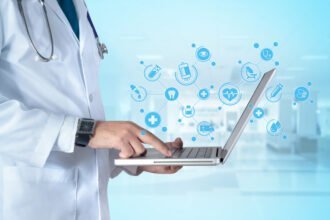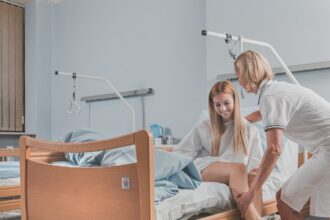
First published in MedCityNews.

First published in MedCityNews.
When Brian Grimberg and a team at Case Western Reserve University began working on their Rapid Assessment of Malaria (RAM) device nearly four years ago, it was the size of a kitchen table. Today, the functional prototype is a handheld device that the team thinks can diagnose the tropical disease more quickly, simply and affordably.
Like the rapid stick tests sometimes used to diagnose malaria today, the device is an antibody-based test that requires a single drop of blood collected from a person. But instead of taking 15 to 30 minutes to deliver results, the reusable, battery-operated device takes less than a minute. It scans the sample for a magnetic substance that malaria parasites release when digesting red blood cells and then delivers a positive or negative result on an LCD screen, according to John Lewandowski, CEO of Disease Diagnostic Group and a recent graduate of Case’s engineering management master’s program.
Grimberg, an assistant professor of international health, infectious disease and immunology at Case, started the work in his lab and called on the expertise of the Department of Biomedical Engineering to turn it into a portable device. When Disease Diagnostic Group was officially formed last summer, he became chief medical officer.
The company has just secured a two-year technology transfer option from Case and $250,000 from the Coulter Translational Partnership. With those two pieces in place, it’s ready to take its working prototype to Peru this fall for field studies. If it demonstrates accuracy and reliability there, Lewandowski said the company will pursue World Health Organization approval.
Grimberg said that because most malaria is treatable, a quicker, cheaper diagnostic test could save hundreds of thousands of lives a year. “The real advantage is that we can take it to the patients,” he said. “We can go into villages and screen people — even people who don’t feel sick but could carry the parasite. That’s another big advantage.”
Since it’s most prevalent in tropical areas, the malaria problem may seem to be a world away. But it’s actually one of the top causes of hospitalization among American troops, diplomats, missionaries and aid workers, too.
Current antibody-based stick tests also can cost as much as $35 per test. When you consider that almost half of the world’s population is at risk for malaria and there are some 219 million new cases a year, that’s a huge cost and time burden. Others still use plate microscopy tests, which require refrigeration, a microscope and trained personnel.
That’s why there’s been such a push for innovation in the field of malaria. Vaccines and new drug treatments are under development, and other companies like F-Cubed and Amplino are working on similar rapid tests.
Grimberg said the team has already seen a lot of interest from groups like the U.S. Army and Doctors Without Borders as they’ve presented at conferences. Lewandowski said they will do some re-engineering based on user feedback after the field tests and then should have beta customers lined up for the fall of 2014 to do more testing.
[Image credit: Disease Diagnostic Group]







